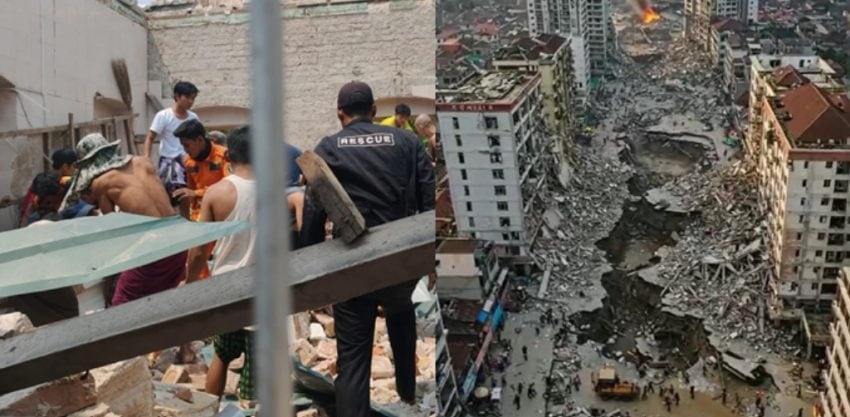NAYPYIDAW – Myanmar earthquake jumped to 700 as rescue efforts intensified amid widespread destruction.
The death toll from devastating 7.7-magnitude earthquake that hit Southeast Asian nation on Friday reached at least 694, with nearly 1700 people reported to be injured, according to the military authorities.
The earthquake caused widespread destruction across Myanmar, including collapsed buildings, damaged infrastructure, and bridges. This earthquake was the strongest to strike the country in over a century.
The tremors were felt as far away as Bangkok, hundreds of kilometers from the epicenter, where significant damage occurred, including the collapse of a high-rise construction site. The incident resulted in dozens of injuries and left more than 100 people missing. In response to the disaster, multiple countries have mobilized humanitarian aid flights to Myanmar, bringing essential supplies such as food, blankets, hygiene kits, and medical resources. These flights also include teams of rescuers and medical professionals.
India has shared images of its national disaster response agency loading supplies onto the aid plane, emphasizing the international collaboration in the aftermath of the crisis. Authorities have indicated that more shipments of aid are expected as the situation develops.
Rescue operations are continuing, but the toll of fatalities and injuries is likely to rise as many people remain trapped beneath rubble. Aftershocks have further hampered recovery efforts and added to the challenges on the ground.
Military junta declared a state of emergency. Neighboring countries, including China and Russia, have sent teams to assist with search-and-rescue operations. The international response is fueling hope that this disaster could bring about a shift in Myanmar’s political landscape, which has long been dominated by military rule.
As countries and global organizations work together to provide assistance, there is a focus on ensuring the effective distribution of relief to those in need. The disaster has also brought attention to the country’s vulnerable infrastructure and the pressing need for long-term improvements to better prepare for future disasters.
The global community is closely monitoring the situation, with activists urging for transparency in aid distribution to avoid political interference. There is hope that the solidarity shown in the wake of this crisis could help foster broader reforms and bring about greater unity in Myanmar and the surrounding region.














